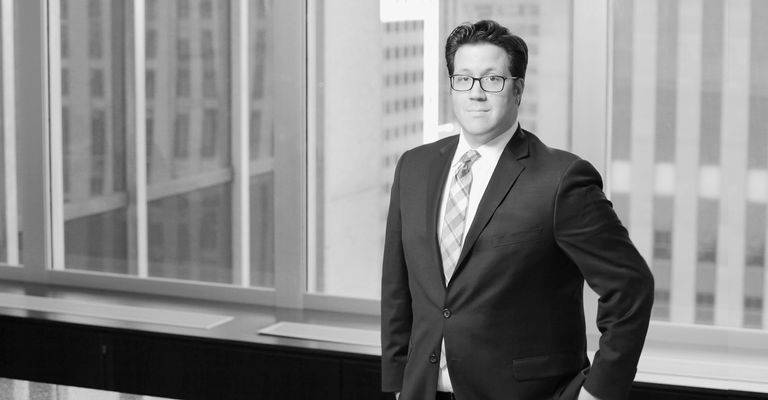BCLPSecCorpGov.com
The Supreme Court Considers Item 303 Violations as Basis for Securities Fraud Claims
Mar 14, 2024Corporate executives know they must disclose in their companies’ financial statements trends or uncertainties affecting their business. Such disclosure is a requirement of Item 303 of SEC Regulation S-K. But what are the consequences of failing to disclose a required trend? It is clear that the SEC has the authority to bring a civil enforcement action. What is less clear is whether, and if so how, private plaintiffs can bring securities fraud class actions for such an omission.
Now, in Macquarie Infrastructure Corp. v. Moab Partners, No. 22-1165 (May 30, 2023), the U.S. Supreme Court is considering a case that addresses whether failure to make a disclosure required under Item 303 can, by itself, be the kind of omission that supports a private securities fraud claim under Section 10(b) of the Securities Exchange Act of 1934. Federal appeals courts are currently split on the issue. The appellant contends that allowing such omissions to support a fraud claim could “open the floodgates to potentially crippling private securities fraud liability.”
Regulation S-K governs companies’ qualitative descriptions of their businesses in public filings. Item 303 specifically prescribes standards for the management discussion and analysis (“MD&A”) section of financial statements, which provides a narrative discussion of the company’s financial performance. Item 303 directs companies to include in MD&A descriptions “any known trends or uncertainties that have had or that are reasonably likely to have a material favorable or unfavorable impact” on financial performance.
A key element of any securities fraud claim is the existence of an alleged misrepresentation or omission by companies and executives. Rule 10b-5, which implements Section 10(b), specifically provides that it is unlawful to “[m]ake any untrue statement of a material fact or to omit to state a material fact necessary in order to make the statements made not misleading;…” (emphasis supplied). So, it is not surprising that plaintiffs’ lawyers have turned to alleged trends or uncertainties omitted from MD&A as omissions that give rise to Section 10(b) claims.
Federal appeals courts have given two different answers to the question of whether an Item 303 omission alone counts as an omission for purposes of pleading a Section 10(b) claim. The Third, Ninth and Eleventh Circuits have said no; simply pleading that a company omitted a disclosure that was required by Item 303 does not suffice to plead an omission for purposes of a Section 10(b) claim. Under these rulings, only if such an omission is also adequately alleged to have made some affirmative statement by the company misleading would it be sufficient as a Section 10(b) omission.
On the other hand, the Second Circuit, which sees the highest volume of securities litigation, has ruled that an alleged violation of Item 303 by omission of a material trend or uncertainty, can, on its own, be actionable under Section 10(b) and Rule 10b-5. Of course, the plaintiff must still satisfy the other elements of a Section 10(b) claim, including pleading that the omitted information is material (meaning that a reasonable investor would consider the omitted information important) and the requisite intent, or scienter, as to the omission.
The key point, however, is that, unlike the Third, Ninth and Eleventh Circuits, in the Second Circuit’s view, where the omitted disclosure is obligatory and material, even in the absence of an affirmative statement, “a reasonable investor would interpret the absence of an Item 303 disclosure to imply the non-existence of known trends or uncertainties[.]” Stratte-McClure v. Morgan Stanley, 776 F3d 94, 102 (2d Cir. 2015). Thus, a plaintiff may satisfy the requirement to plead an untrue statement or material omission where the omission is solely of a trend or uncertainty required to be disclosed under Item 303, even if that omission is not alleged to render an affirmative statement by the company misleading.
The facts of the Macquarie case illustrate how this kind of issue arises in litigation. Macquarie Infrastructure Corp. (“Macquarie”) operates fuel storage facilities. The plaintiff alleges that Macquarie violated Item 303 by not disclosing the likely future impact of a regulation restricting the use of a type of fuel that Macquarie was in the business of storing. Although Macquarie acknowledged the risk of lower demand for the restricted fuel in certain 2012 earnings calls, it did not make mention of this risk in disclosures between November 2012 and February 2018. On February 21, 2018, Macquarie announced that the volume of fuel stored in its storage tanks had dropped and the company had missed its financial projections.
In a class action complaint, the plaintiff brought, among other things, claims under Section 10(b), relying on the alleged omission of trends and uncertainties concerning the impact of the fuel regulation on demand for storage of the fuel. The Second Circuit, relying on its earlier precedent, upheld the claim, prompting Macquarie’s appeal.
The Supreme Court is expected to resolve the split in the circuits on the Item 303 issue. The case could have significant consequences. If the Supreme Court confirms that Item 303 violations can serve as an independent basis for a Section 10(b) claim, that could enhance the ability of plaintiffs across the country to bring lawsuits based on such alleged omissions under Item 303, or perhaps even other regulations requiring disclosures. Moreover, as argued by Macquarie in appealing the Second Circuit’s decision, allowing such claims heightens uncertainty in the law, since Item 303’s direction that companies disclose currently known “trends or uncertainties” that are “reasonably likely” to have a material impact invites a complex and subjective inquiry.
Should the Supreme Court side with the Third, Ninth and Eleventh Circuits, then plaintiffs in the Second Circuit will no longer be able to base Section 10(b) and Rule 10b-5 claims on violations of Item 303 alone. Instead, they will need to base their Item 303-related claims on additional allegations that the Item 303 omissions rendered another affirmative statement materially misleading.
With either result, the Supreme Court would resolve the circuit split on Item 303 and provide public companies with guidance concerning the consequences of failing to disclose a required trend or uncertainty.
Related Practice Areas
-
Securities & Corporate Governance
-
Securities Litigation and Enforcement




